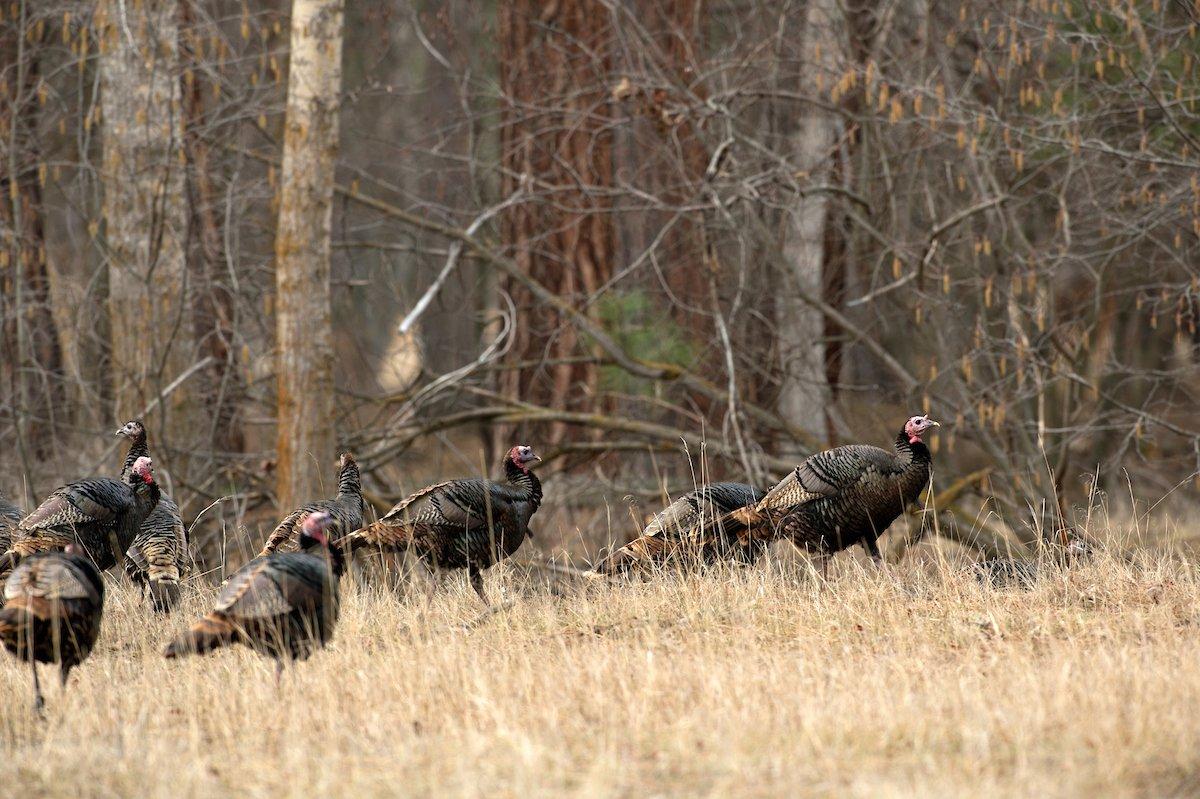And Why You Should Do It
I grew up in north-central Pennsylvania at a time when fall turkey hunting was more popular than the spring tradition. Hunter participation numbers bore this claim out.
Then, around the turn of the century, it changed. Spring turkey hunting edged past fall in my native state in terms of popularity (though many participate in the two-season tradition there still).
Still, as a teenager just cutting my teeth on fall turkey hunting, I'd listen to older hunters — men my age now — who used to say spring turkey hunting was "cheating," that it was easy to call in a love-crazed gobbler.
Well, that's not always true, as my experience says otherwise, and likely yours does too.
These days, you can hunt fall turkeys somewhere from September to January. But wait. Some states let you; some states don't.
Where You Can: Why 42 States Have Fall Turkey Seasons
Where You Can't: 8 States Where You Can't Hunt Fall Turkeys
Archery seasons for deer frequently overlap with bow-only dates for turkeys. You may get a bonus bird from a treestand — but if you really want to shoot a turkey, a targeted ground-blind ambush is another option.
You'll mostly be hunting brood hens with young-of-the-year poults right now, and these flocks are highly predictable around their favorite foods. Fall gobblers run in gangs, and oh man, are they fun. And frustrating.
Read More: The Truth About Fall Gobbler Hunting
Where to Find Birds
Before mast falls, those foods usually include bugs, green food plots, chufa patches, and grains, like milo and corn.
Since the birds key on fields, they're fairly easy to locate and pattern.
It's not uncommon to catch a flock cruising through a hay meadow or loafing in a shady pasture corner at midday, but you can expect them to feed like clockwork early in the morning and late in the evening.
Target that fallen mast too.
Sit Tight
Make your setup. Sit. Wait. Seven tips for doing it follow here:
1. Intercept them (A) along travel lanes or (B) right where they feed.
2 Find access points including farm roads, bottlenecks, field corners, edge-cover openings, and game trails leading to breaks in fencing.
3. If turkeys are roosting close to a field where they're feeding, they may pitch out of trees and right down to it.
4. If the food source is in a wide-open area, flocks will typically use the field's highest point to walk into it.
5. A ground blind is the best way to get a shot once you've patterned a flock of turkeys, as it allows you to draw a bow unseen.
6. Stake a pop-up in range of the X — where turkeys feed and want to be. Miss the X by just a little? Be patient.
7. Let the birds go to roost and adjust accordingly for the next day.
Bonus Read: Five Tips for Sharing a Turkey Hunting Blind
The Key: Scatter Them
Scattered fall turkeys will try to regroup almost every time.
The reassembly can be a chaotic scene, with panicked turkeys calling in every direction.
If you're sitting in the middle of that with a shotgun and can run a turkey call, your odds of killing a bird are outstanding.
Right now — when turkeys are in the woods in search of hard mast — is the time to try it.
First you have to scatter a flock, and one of the best ways to do that is by busting them off the roost.
Slip right up underneath them at daybreak and start flushing them out of the trees. Make plenty of racket; get singles to fly in every direction.
You can also do this in the evening so that the turkeys spend all night scattered; the response at daybreak can be off the charts.
During the day, you can scatter flocks by using terrain, slipping in close and rushing into them.
After the break, set up within gun range of the scatter site. Wait until turkeys call on their own, and echo their sounds when they do.
If you hear gobbler yelps, yelp right back. If you hear kee kee runs, make them, too. Often, scattered young birds try to get together fast, in under an hour.
Adult gobbler gangs often won't respond for hours, but the wait is worth it. I've seen flocks of scattered toms and super jakes — 1 1/2-year-old gobblers — go into gobbling, strutting frenzies as they regrouped. It's as good as anything in spring.
Canine Help: How to Hunt Fall Turkeys with Dogs
Entire turkey populations may shift home ranges in winter and concentrate near top food sources, such as picked crop fields, cow pastures, feedlots, and hardwood mast.
It's a great time to hunt. Pecking order is a year-round factor with turkeys, but as the new year arrives, gobbler groups feel spring's pull and begin working overtime to establish dominance. If turkey season is still open where you hunt, use that to your advantage by slipping tight to a roost and imitating a post-fly-down rumble well before dawn.
Deke It Out
Get your collection of turkey decoys — including a jake or strutter fake — and stake the entire thing out within easy range. Match it with heavy calling. Diversity and intensity is the key because you're trying to imitate an entire flock. You won't be able to match the sounds of dozens of turkeys by yourself, but you may be convincing enough to watch a dominant gobbler break loose from the flock and strut right into your setup.
State Picks: Nebraska and Kansas. Both offer seasons ending January 31, 2019.
More Realtree turkey hunting. Follow us on Facebook.
Steve Hickoff is Realtree.com's editorial director and turkey hunting editor.








